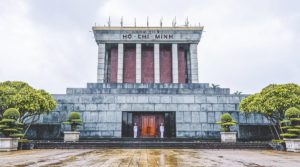Visiting the Imperial Citadel of Thang Long in Hanoi is a must-see for anyone interested in Vietnamese history and culture. This UNESCO World Heritage Site offers a glimpse into the country’s rich and complex past, with fascinating archaeological finds and beautifully restored architecture. Make sure to allocate enough time to fully explore the site and take in all its highlights.
This is the history of Thang Long Imperial Citadel
The first foundations
The first foundation of the city was built in the 7th century, the Citadel was founded. During that time, Vietnam was being invaded by China, which built a fortress there. The capital was shifted from Ninh Binh (Hoa Lu) to Dai La (the former name for Hanoi) by King Ly Thai To in 1010. The citadel was constructed over the ruins of the fortress. Throughout the next 13 decades, the Citadel served as the political center of the region.
Under the Tran, Le, and Nguyen Dynasties, the Imperial Citadel suffered several wars that ravaged it. When Emperor Quang Trung relocated the Vietnamese capital to Phu Xuan (now Hue) in 1810, Thang Long was the capital. However, it was abandoned in the late 18th century when the capital was moved to Hue.
French colonial times
As a result of French colonial rule, many structures suffered severe damage. The majority of the remaining structures were destroyed by the end of the twentieth century. More than 4, 000 French colonial soldiers were imprisoned at the Citadel by Japanese force in 1945.
Vietnam War
During the Vietnam War, the Imperial Citadel of Thang Long in Hanoi was used as a military base by the Vietnamese People’s Army. The site was strategically important as it was located in the center of the city and provided a vantage point for observing American military activities. The citadel was heavily fortified with trenches, bunkers, and anti-aircraft guns to defend against possible air raids. The Vietnamese government also used the citadel as a storage facility for important documents and artifacts to protect them from being destroyed during the war. After the war, the citadel was restored and opened to the public as a historical and cultural site.
The Citadel today
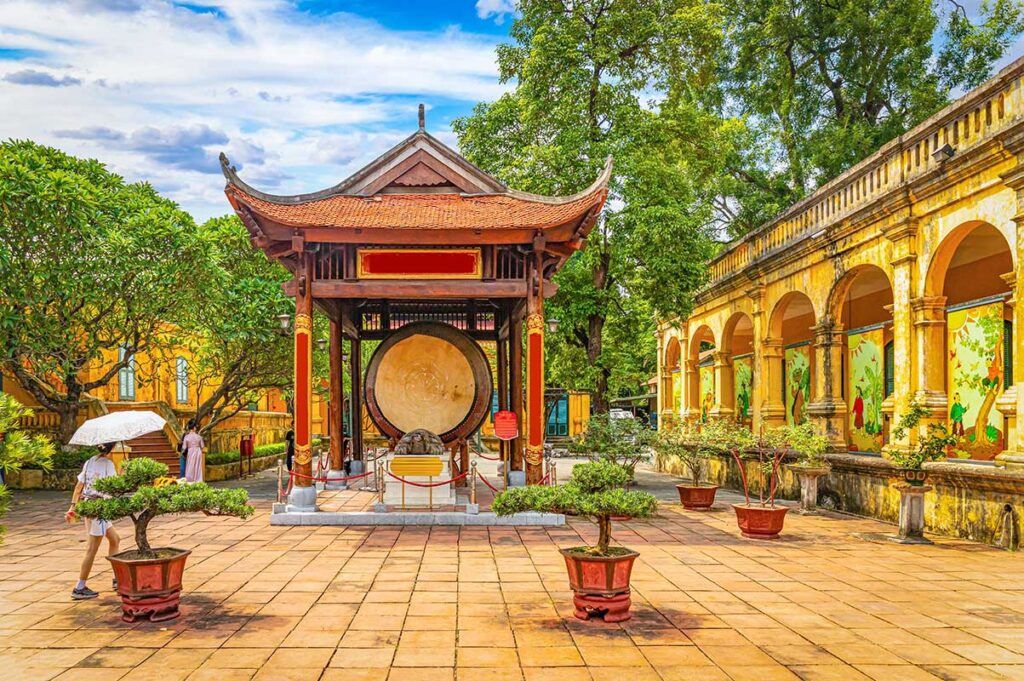
The Thang Long Imperial Citadel was excavated systematically in the 21st century. Numerous artifacts and items were found in 2004, including all kinds of ancient items, such as streets and palace foundations. In 2010, the UNESCO World Heritage Committee listed the Central Sector on the UNESCO list of important sites for world heritage.
Highlights of the Imperial Citadel of Thang Long
The Imperial Citadel of Thang Long in Hanoi is a vast complex with many highlights, including:
1. Ky Dai Tower (Flag Tower)
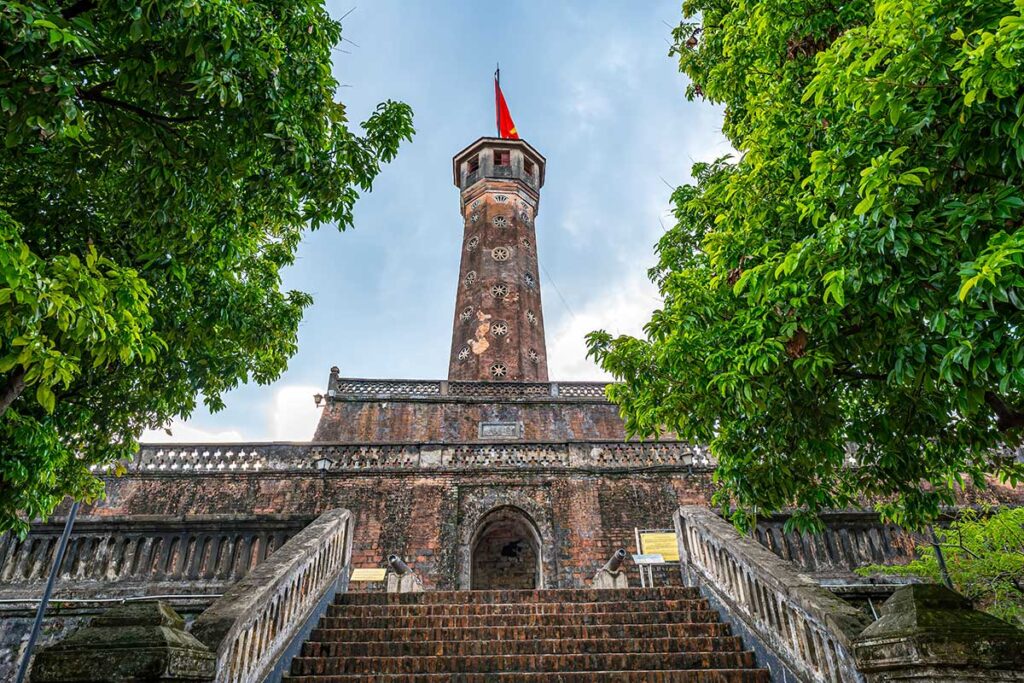
The iconic Hanoi Flag Tower was built in 1812 during the Nguyen dynasty and served as a military post to protect the citadel. The tower has a unique architecture with three platforms, each containing a terrace and a flagpole.
The tower was originally built with a height of 33.4 meters, but was reduced to its current height of 27 meters after several renovations. The tower is made of brick and stone, and is considered one of the symbols of Hanoi.
You can climb up to the top of the tower to get a panoramic view of the surrounding area, including the citadel and the nearby Ba Dinh Square. The tower is also illuminated at night, creating a beautiful sight to see.
2. Palace of Kinh Thien
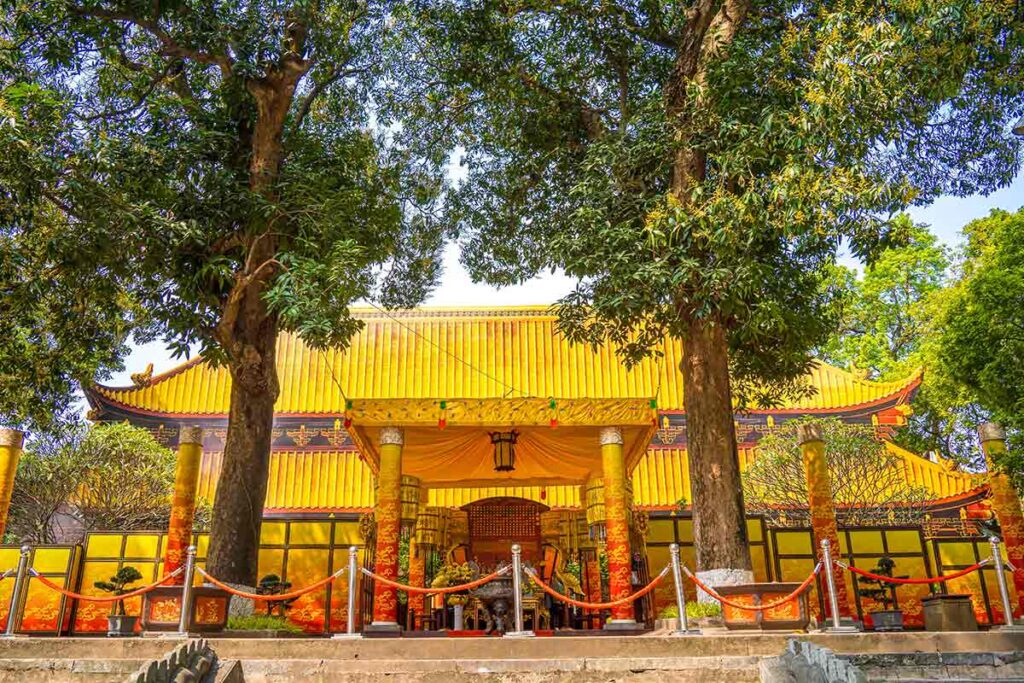
Kinh Thien Palace is one of the most significant and well-known structures in the Imperial Citadel of Thang Long. It was constructed during the Le Dynasty and was later restored during the Nguyen Dynasty. The palace served as the most important building in the citadel and was used for major events, including coronations and important state occasions.
The palace is divided into three main sections: the front, middle, and rear halls. The front hall was where the emperor received guests and held important meetings, while the middle hall was used for banquets and ceremonies. The rear hall was where the emperor lived and conducted his private affairs.
The palace was built in a unique architectural style with a combination of Chinese and Vietnamese elements. The roof of the palace is covered with yellow-glazed tiles, which symbolize the imperial power of the Vietnamese monarchs. The interior of the palace is decorated with intricate carvings and ornate details, such as dragon motifs and gold leafing.
Unfortunately, much of the original palace was destroyed during the French colonial period, and only a portion of the original structure remains today. However, efforts have been made to restore and preserve the remaining sections of the palace, making it an important historical landmark in Hanoi.
3. The southern entrance (Doan Mon)
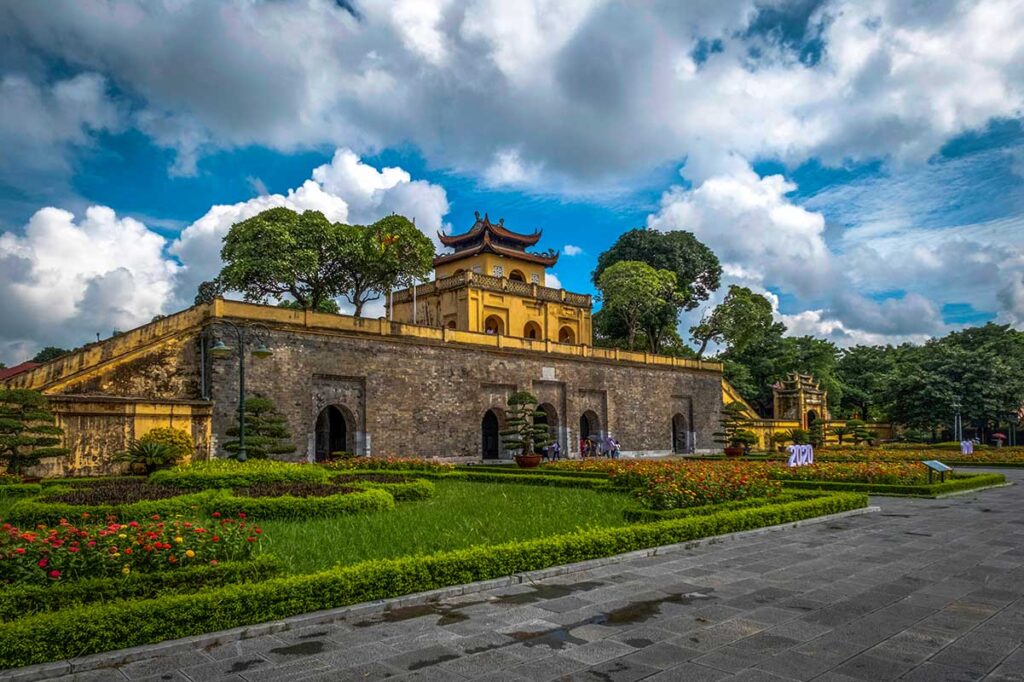
There are only two gates left in the Citadel, Bac Mon and Doan Mon. Doan Mon is the main gate of the Imperial Citadel of Thang Long. It was built in the 11th century during the reign of King Ly Thai To, who founded the city of Thang Long, which later became Hanoi.
Doan Mon is an impressive structure that stands 15.5 meters tall and 40 meters wide. It has five arches, with the middle arch reserved for the king and the other four for his attendants. The gate is made of brick and stone and is topped with a tiled roof, decorated with dragon and phoenix motifs.
The gate was destroyed and rebuilt many times over the centuries. The current structure was rebuilt in 1817 during the reign of King Minh Mang of the Nguyen dynasty. Today, it is one of the most iconic landmarks of Hanoi, and you can see the gate and take photos of its impressive architecture.
4. The Northern Gate (Bac Mon)
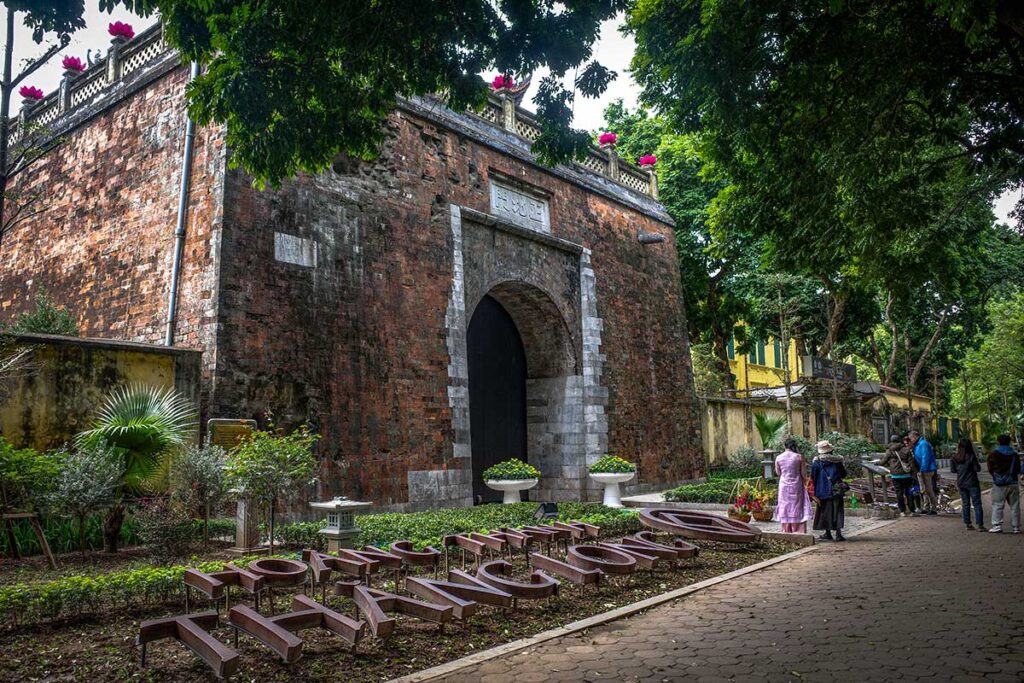
The Bac Mon Gate, also known as the Northern Gate, is located in the north of the Imperial Citadel of Thang Long in Hanoi. It is a large two-story gatehouse with a curved roof and two watchtowers on either side. The gate was built during the reign of King Le Thai To in the 14th century.
The Bac Mon Gate served as the main entrance to the Imperial Citadel of Thang Long, and only members of the royal family, high-ranking officials, and foreign dignitaries were allowed to enter through this gate. The gate also played an important role in the defense of the citadel, as it was heavily fortified with walls and watchtowers.
The former Hanoi governors Nguyen Tri Phuong and Hoang Dieu are now worshipped in this brick and stone structure. In nineteenth-century Vietnam, when the French invaded Vietnam, they were loyal subjects of the Vietnamese government.
5. The Princess Pagoda (Hau Lau)
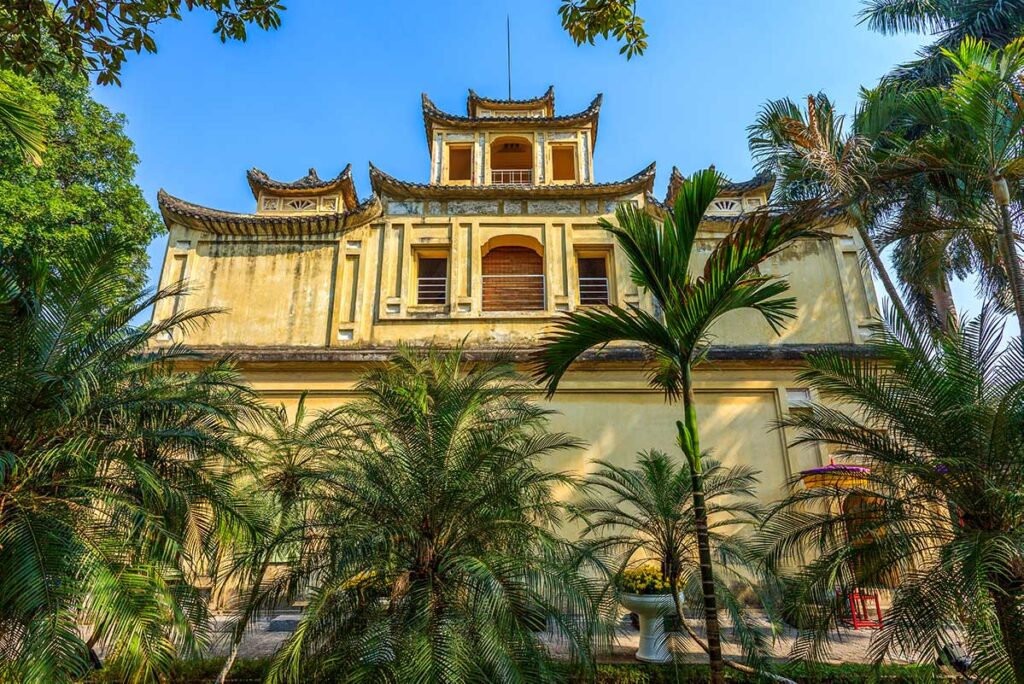
Hau Lau, also known as the Princess’ Palace, is a small palace located within the Imperial Citadel of Thang Long. It was built in the early 19th century for the princesses of the royal family to study and live in. The palace consists of two buildings connected by a corridor, with a small courtyard in the middle. The architecture of Hau Lau is influenced by both Chinese and Vietnamese styles, with a combination of wood and brick materials.
“Pagode des Dames” was what Hai Lau was called by the French. End of the 19th century, the monument suffered severe damage, and then the French reconstructed it. The palace has been restored and is now open to the public, displaying artifacts and exhibits related to the history of the royal family and the citadel.
6. D67 and the house therein

Citadel D67, used by the Vietnamese People’s Army as its headquarters from 1954 to 1975. An emergency tunnel provided an escape route during an attack. A hall known as Kinh Thien is situated to the north of the house and tunnel. A modern house, built in 1967, its walls are 60 centimeters thick and provide good soundproofing. There are a variety of rooms at this location, including meeting rooms, break rooms, and office spaces. Soundproof doors, maps, and telegraphs were put on display in conjunction with objects related to the Vietnam War.
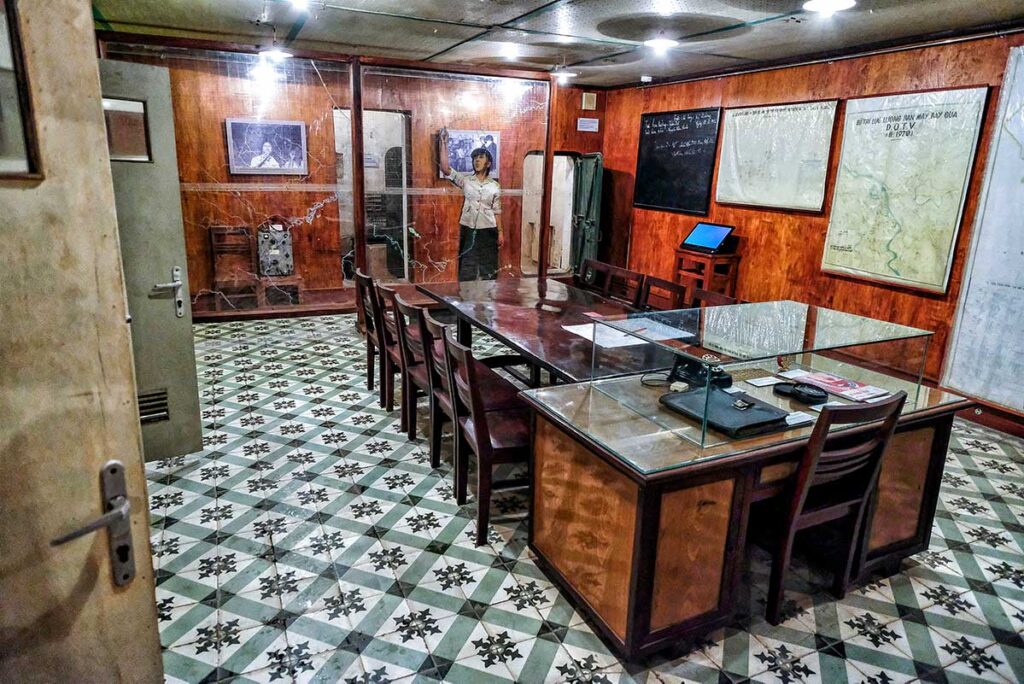
Today, you can tour the D67 House and Tunnel as part of the Imperial Citadel of Thang Long site. The house has been preserved to look much as it did during the war, with maps and communication equipment on display. The tunnel is accessible through a small opening in the ground and you can walk through it to get a sense of the tight quarters in which soldiers had to work and live. The site offers a unique perspective on the Vietnam War and the role of the North Vietnamese army.
Visiting information
Opening times
The Imperial Citadel of Thang Long is open from 8:00am to 5:00pm daily, except for Mondays when it is closed.
Entrance Fees
The entrance fee for adults is 30,000 VND (approximately 1.30 USD) and for children, students and seniors is 15,000 VND (approximately 0.65 USD).
Dress code
There is no official dress code, but you are advised to dress modestly and respectfully, covering your shoulders and knees, as a sign of respect for the cultural and historical significance of the site.
Visiting tips
- It is recommended to visit the Imperial Citadel of Thang Long in the morning or late afternoon to avoid the midday heat and less crowded with tourists.
- Most of the citadel is outside, so on sunny days, make sure to bring sunscreen and on rainy days you might want to take a umbrella or rain poncho.
- Guided tours are available in English and other languages and are highly recommended to learn more about the history and significance of the site.
- You should also be careful and stay within designated areas as some parts of the site are still being excavated and restored. Additionally, visitors can download the Imperial Citadel of Thang Long app for a self-guided tour with interactive features.
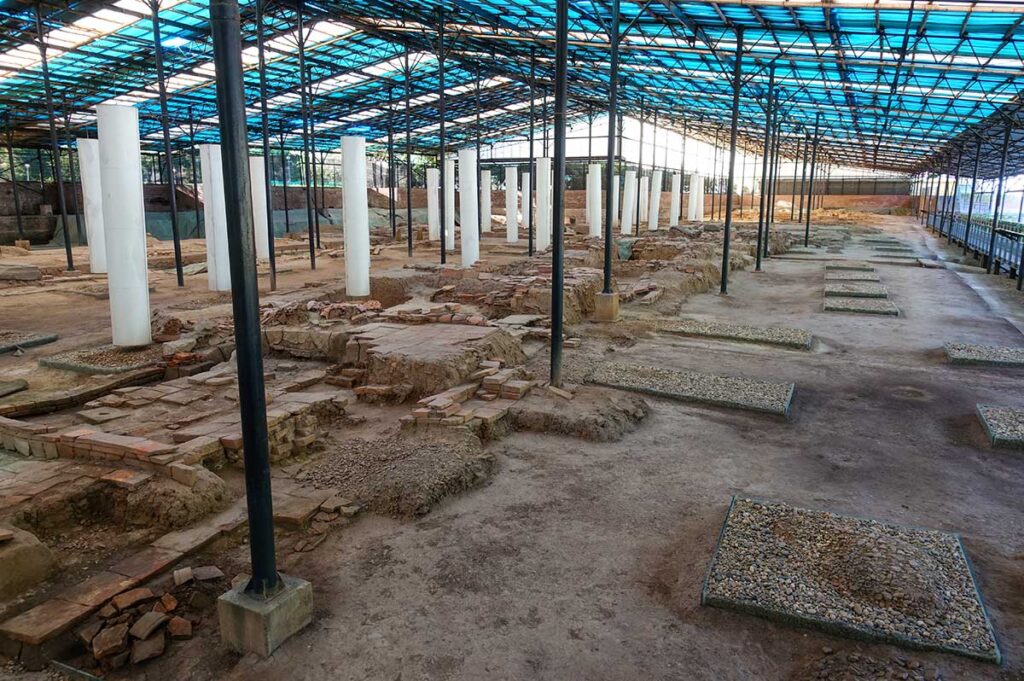
How to get to Thang Long’s Imperial Citadel
The Imperial Citadel of Thang Long is located in Ba Dinh district, which is about 4 km west of the Old Quarter. There are several ways to get to the Imperial Citadel:
Taxi and Grab
Taxis and Grab are readily available throughout Hanoi. You can book a taxi or Grab ride using the mobile app or flag one down on the street. The ride from the Old Quarter to the Imperial Citadel should take about 15-20 minutes, depending on traffic.
Read more about: Taxi and Grab in Hanoi.
Public bus
You can take bus route 22 or 32 from the Old Quarter to the Imperial Citadel. Route 22 stops directly in front of the citadel, while route 32 stops nearby. The bus fare is affordable and the ride takes about 30-40 minutes, depending on traffic. However, for foreign travelers it can be a bit hard navigating the public buses in Hanoi.
Walking or cycling
It is possible to walk or cycle to the Imperial Citadel from the Old Quarter. From the Old Quarter it is quite a walk, but you can combine it with other sigths along the way, such as Hanoi Train Street and St Joseph Cathedral.
If you want to visit Thang Long’s Imperial Citadel as part of a self guided walking route, read: Hanoi Walking Routes.
Overall, taking a taxi or Grab is the most convenient and comfortable option, while taking the public bus is the most affordable.
Is it worth visiting?
Yes, you should visit the Imperial Citadel of Thang Long. It is one of the most impressive sights in Hanoi and offers a deep dive into Vietnamese history and culture. Plan to spend at least 2-3 hours exploring the site to fully appreciate its highlights. If you have only one day in Hanoi, you might want to stick to the Old Quarter, but if you have more time, definitely add the citadel to your itinerary.
You can also combine your visit to the citadel with other nearby attractions. Right next to the citadel is the Vietnam Military History Museum, where you can see an extensive collection of artifacts and exhibits related to Vietnam’s military history. A few hundred meters from the citadel is Ba Dinh Square, home to the Ho Chi Minh Mausoleum, the One Pillar Pagoda, and Ho Chi Minh’s Stilt House. With so many significant sites in close proximity, you can easily spend a whole day exploring this part of the city.
